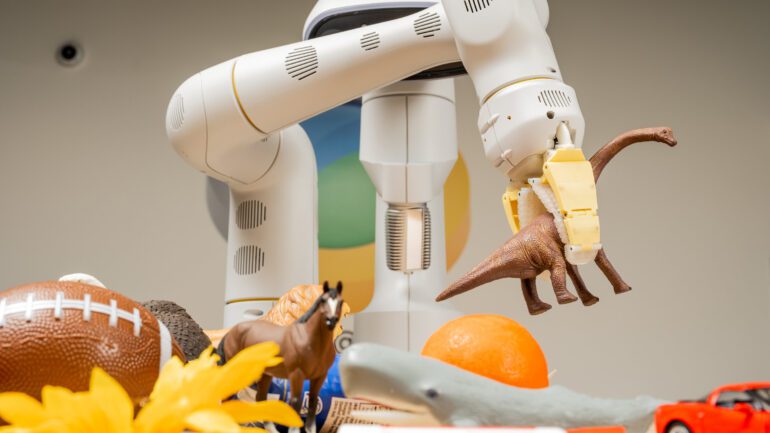TL;DR:
- Google introduces Robotics Transformer 2 (RT-2) – an AI model to train robots for tasks like trash disposal.
- RT-2 uses internet data and images to translate information into actions for robots.
- It enables robots to understand complex tasks without explicit programming.
- The new model significantly improves robot performance in unfamiliar scenarios.
- Potential applications include warehouses and home assistant roles.
Main AI News:
In a groundbreaking announcement, Google revealed its latest innovation – the Robotics Transformer 2 (RT-2) – an advanced artificial intelligence model designed to revolutionize robot training for tasks like efficiently throwing out trash. This cutting-edge vision-language-action model is trained using vast amounts of data and images from the internet, enabling robots to seamlessly translate information into decisive actions, as reported in Google’s official blog.
While the concept of disposing of trash seems like a mundane task to humans, teaching robots to accomplish this requires a multifaceted understanding of a series of actions. Initially, the robot must possess the ability to identify various items as trash, followed by the knowledge of picking them up and correctly discarding them. Traditionally, achieving such skills would involve tedious manual programming, but RT-2 empowers robots to leverage the collective knowledge available on the web, enabling them to master the task even without explicit training on each individual step.
The remarkable progress made with the new model is evident in a near doubling of the robots’ performance when confronted with previously unseen scenarios. Compared to its predecessor, the latest version of the model has significantly enhanced reasoning capabilities, enabling the robots to respond adeptly to user commands, as highlighted by Google.
While the technology’s current focus lies on refining robot capabilities, Google has yet to finalize plans for widespread commercial release or sale of robots equipped with this cutting-edge technology, according to a report by The New York Times. Nevertheless, the potential applications are vast, ranging from optimizing warehouse operations to serving as invaluable home assistants, the Times added.
Conclusion:
Google’s Robotics Transformer 2 (RT-2) marks a significant leap in AI-powered robotics. By enabling robots to learn tasks like trash disposal through internet data, RT-2 eliminates the need for laborious manual programming. The enhanced performance and reasoning capabilities open doors for diverse applications, making it a potential game-changer in the market. As businesses explore opportunities to optimize efficiency and automation, the adoption of advanced AI models like RT-2 could lead to transformative changes in various industries, ranging from logistics to household assistance. Embracing this technology could give companies a competitive edge in delivering more effective and streamlined services.

